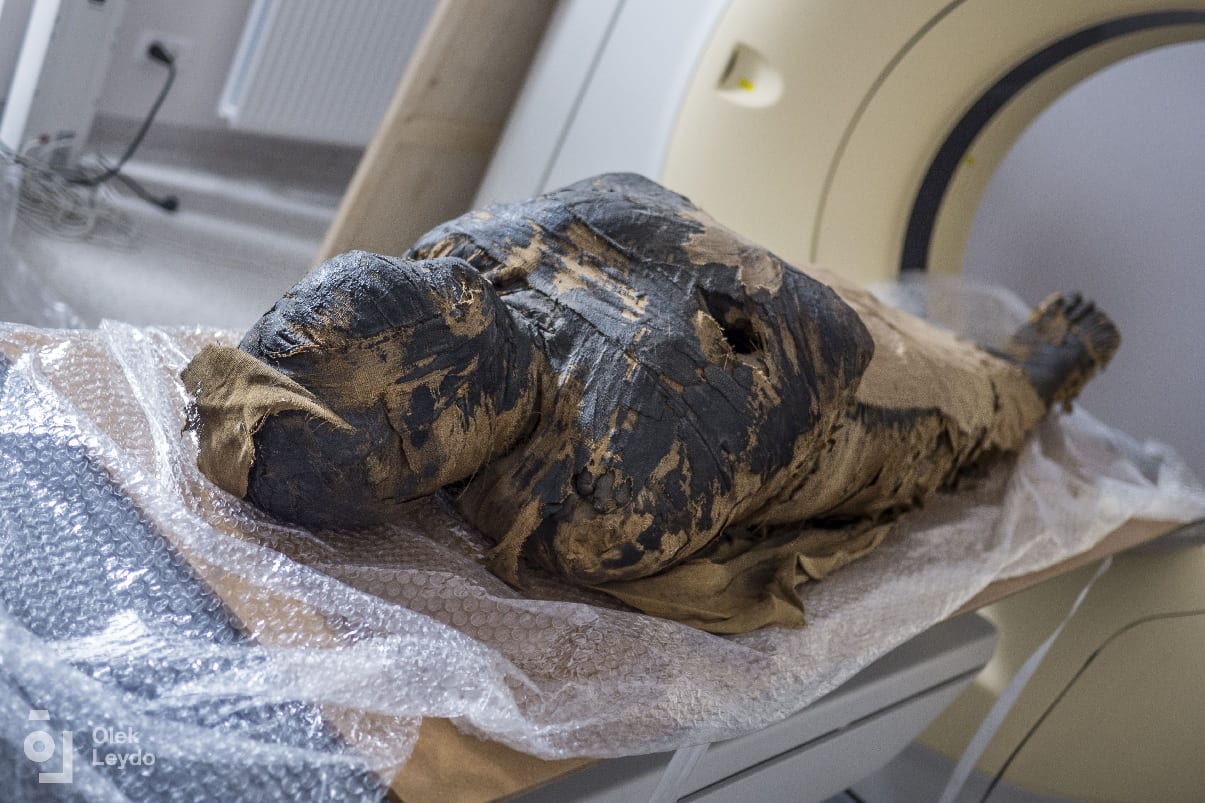The first known case of a pregnant Ancient Egyptian mummy has been revealed by researchers from the Warsaw Mummy Project.
The mummy, which is housed in the National Museum in Warsaw was previously thought to be the remains of the priest Hor-Djehuti, until it was discovered in 2016 to be an embalmed woman who lived in Thebes around the 1st century BC.
Dr. Marzena Ożarek-Szilke from the University of Warsaw said in an interview to PAP: “We were about to summarise the project and submit the publication to print. For the last time my husband Stanisław Szilkec looked at the x-ray images, and we saw in the deceased woman’s belly a sight familiar to the parents of three children … a little foot.”

A closer examination using tomographic imaging revealed that the woman was between 20-30 years old when she died and was in her 26th to 30th week of her pregnancy.
Wojciech Ejsmond from the Institute of Mediterranean and Oriental Cultures of the Polish Academy of Sciences said: “For unknown reasons, the fetus was not removed from the abdomen of the deceased during mummification.” This has led the research team to speculate as to whether the fetus was to difficult for the embalmers to remove, that there might have been an attempt to camouflage an unwanted pregnancy, or possibly in connection to the ritual beliefs of rebirth and the afterlife.
Scientists will now try to unravel the mystery of the cause of the woman’s death. “It’s no secret that the mortality rate during pregnancy and childbirth was also high at that time. Therefore, we believe that the pregnancy could have somehow contributed to the death of the young woman ”- noted Dr. Ejsmond.
Header Image Credit : O. Leydo





